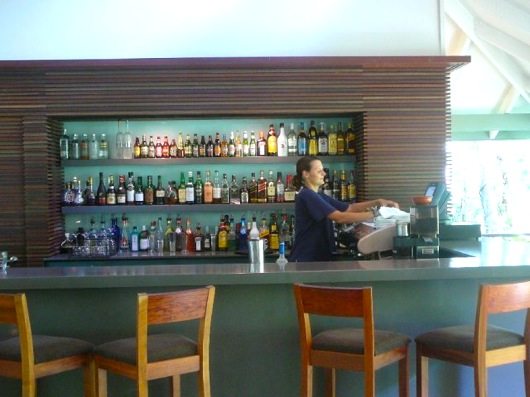Australia Food
Food in the Australian culture
Before the coming of the colonialists, the natives of Australia largely depended on the nature around them for food. When the settlers came they brought with them much of the food that is now in use.
However when they first settled their, the colonialists had the native animals as their source of meat. They later moved on to beef and mutton. More and more changes have occurred with time.
Although sea food had been in use from time immemorial it became even more popular in the 1900s together with poultry meet. The food eaten in Australia has largely been impacted by the immigrants from different countries like the Jews, Italians, and Greeks among many others. Ingredients such as lard have now been replaced by vegetable and olive oil.
Asian food flavours are largely accepted and used in the preparation of most of the dishes. As a matter of fact chefs from Australia are well known for their 'fusion cuisine'. These are cuisines that cook European food while incorporating Asian flavours.
Apart from the foods that are common the world over Australia has some foods that can be said to be national foods. Some examples are:
- Vegemite- spread that has been made from yeast extracts.
- Anzac Biscuits- biscuits that are made from oats and were used in the WW1 by the soldiers.
- Milo- chocolate powder used to flavour milk.
- Damper - wheat flour based bread that is prepared traditionally over a wood fire.
Australia falls among the leading nations in the consumption of fast foods. You can find many fast food chains spread through the suburbs attesting to this fact. In the past the country was known as one of tea drinkers but of late coffee and wine have gained popularity.
The other thing that Australia is widely known for is beer. This together with wine is hard to miss. In fact Australia is an exporter of some of the best wines in the world.
Food in Australia
Whilst Australians may be famous for barbecues and bush tucker, most Australians in fact have very multi cultural tastes. Well known for being open to trying anything new, with many Australians having a keen taste for Asian cuisine as well as Greek and Italian.
Multi Cultural cuisine has been very popular in Australia for years, with only recently Australians are starting to go back to their roots. Australian cuisine is starting to become popular again, with a bit of a modern spin on it though. The typical Aussie meal used to consist of meat and three vegetables, a roast lamb with roasted vegetables was always the most popular meal, along with meat pies and vegemite sandwiches.
As for bush tucker this consisted of Kangaroo Meat, Root Vegetables, Fish and other Seafood. It is these foods that are becoming a popular Modern Australian cuisine. With Australian Restaurants now opening up for both locals and tourists to try these dishes. New meats are also being tried, Crocodile meat is becoming a huge hit in many restaurants.
Australians are very supportive of their local farmers, with most restaurants, markets and shops using and selling local produce. Australians are lucky to have dairy farmers, vineyards, market gardens, olive groves, orchards, fisheries and meat farmers right on their doorstep.
Australia has come a long way since the days of damper, meat pies and vegemite. Although these have never been forgotten and are still popular today.
Australia Food and cuisines
Australia is a multi-cultural country and food lovers enjoy the maximum benefit of the multiculturalism it offers.
True aspect of multiculturalism in the field of food and drinks is to be able to offer almost every cuisine in the world at an affordable price. When an average person sitting in Australia is able to eat Turkish kebabs, Italian style pasta, Indian curries, Sushi, Greek style meat or Chinese noodles without breaking his back, the benefits of multiculturalism are felt.
The previous generations Australians have been known to enjoy meat pies, boiled beef, bush tucker and sandwiches. With the advent of immigrants from around the world, the people have given their taste buds more flavor than they ever thought.
Another big advantage that Australia possesses as compared to other countries of the world is the availability of fresh ingredients. Australia is naturally an agricultural land and is known for its rich flavored vegetables and fruits.
Australia’s dairy products are also known world-wide. The variety and quality of cheese it offers is comparable to France and its ice-creams are enjoyed by people of all ages. Australia also produces highest quality beef and lamb that are also exported to many nations. Being a continent and having all the major cities next to the ocean, it enjoys fresh sea-food too.
Like many European countries, Australia offers special food products that are known with the regions they come from. Few examples are King Island cream, Bowen Mangoes, Sydney Rock oysters, Tasmanian salmon etc. There are other regions in each state which are also known to offer the food and drink experience that many people yearn.
The summary below will give you list of special items known in each main region
NEW SOUTH WALES: Sydney rock oysters, Hunter Valley wines, Illabo milk-fed lamb
SOUTH AUSTRALIA: Barossa Valley wine, Coffin Bay scallops, olive oil, tuna, cultivated native food
VICTORIA: Gippsland beef, Meredith lamb, cornfed chicken
TASMANIA: Salmon, trout, cheeses, oysters, raspberries
QUEENSLAND: Bowen mangoes, papaya, succulent reef fish, Moreton Bay Bugs
NORTHERN TERRITORY: Barramundi fish, Mangrove Jack (fish), crocodile, buffalo
As more and more Australians experienced different flavors and realized that Australia has much more resources than to make meat pies, vegemite sandwiches and lamingtons, cooking became a passion. The industry grew and more and more people got attracted towards choosing a profession that aims to prepare delicious food.
Australian chefs and winemakers got trained from world-known institutes and then modified the world style to create a unique one for Australia. Australia’s produce that was once prepared in standard process of simply heating up the meat was then transformed into a rich melting pot of cuisine and award winning wines. Whether you crave a fresh seafood platter, a racy Riesling, a modern Asian-fused meal, Lamb kebab wraps, creamy pasta or a crocodile sausage, Australia can offer the lot.
In Australia, South Australia and Victoria have vineyards that produce wines that are famous around the world. Many of these wineries also have cafés and restaurants in the same premises that offer delicious and vast variety of food that goes well with their wines. A visit to one of these wineries is a feast for anyone who enjoys food.
Other than the continental food that has its origins from Europe, Australia also offers a wide variety of food items from other countries. Chinese and Japanese food is available in abundance and at all budgets. From a small noodle bar in a suburban area to a fine-dining restaurant in the upscale location, visitors to Australia can cherish Chinese food in any surroundings. In fact, sushi and noodle box are very common lunch items for the blue-collar and the white-collar workforce. Same can be said for butter chicken and rice item of the Indian cuisine. Australians enjoy hopping in to a small take-away Indian restaurants and ordering a butter chicken and rice combo to give their taste buds a feel of Indian spices.
Australia also has a huge Lebanese/Turkish population. These migrants brought with them a vast variety of mouth-watering dishes. Lamb Kebabs, Falafel, wraps are very popular among the Australian population and tourists.
As already mentioned, Australian chefs have surprised the critics by preparing delicious dishes by mixing flavors from different ethnic traditions. A modern Australian cuisine is thus born out of Asian chillies, lemon grass, coriander, cardamom and traditional European continental food.
Chefs from Asian backgrounds have also prepared mouth-watering dishes by substituting traditional ingredients for unusual local Australian ones. Such mix and match experiments have resulted in culinary creations such as Cantonese stir-fried Kangaroo meat, barramundi fish in Thai green curry, Angel-hair pasta with Blamain Bugs, Tandoori marinated buffalo fillet with curried spinach and beetroot relish and a roasted pear and saffron polenta etc.
To summarize, one of the biggest advantages of coming to Australia, for whatever purpose (education, work or holidays), is that not only you enjoy breath-taking views this beautiful country has to offer, but you also devour on delicious dishes from cuisines around the world.
Bon Appétit!!
Organic fruit and vegetables
Unlike conventional fruit, organic fruit must be stored in the fridge. Unless it needs ripening, like avocados, bananas, paw paw, stone fruit, etc.. and then as soon as they’re ripe, eat them, or put them in the fridge (except bananas – peel and freeze them if you have more than you can eat, and use them for smoothies in the blender).
The reason non-organic fruit can be stored at room temperature is because it often has a chlorine wash or fungicidal wax coating after harvest, and this prevents spoilage. Because organic fruit doesn’t have this, it’ll spoil within days if kept at room temperature.
When storing your organic fruit and veg in the fridge, be sure to keep apples away from your greens. If stored loose in the same crisper, the natural ripening gasses given off by your organic apples will turn your organic greens yellow (eg. Broccoli, spinach, kale, etc.).



